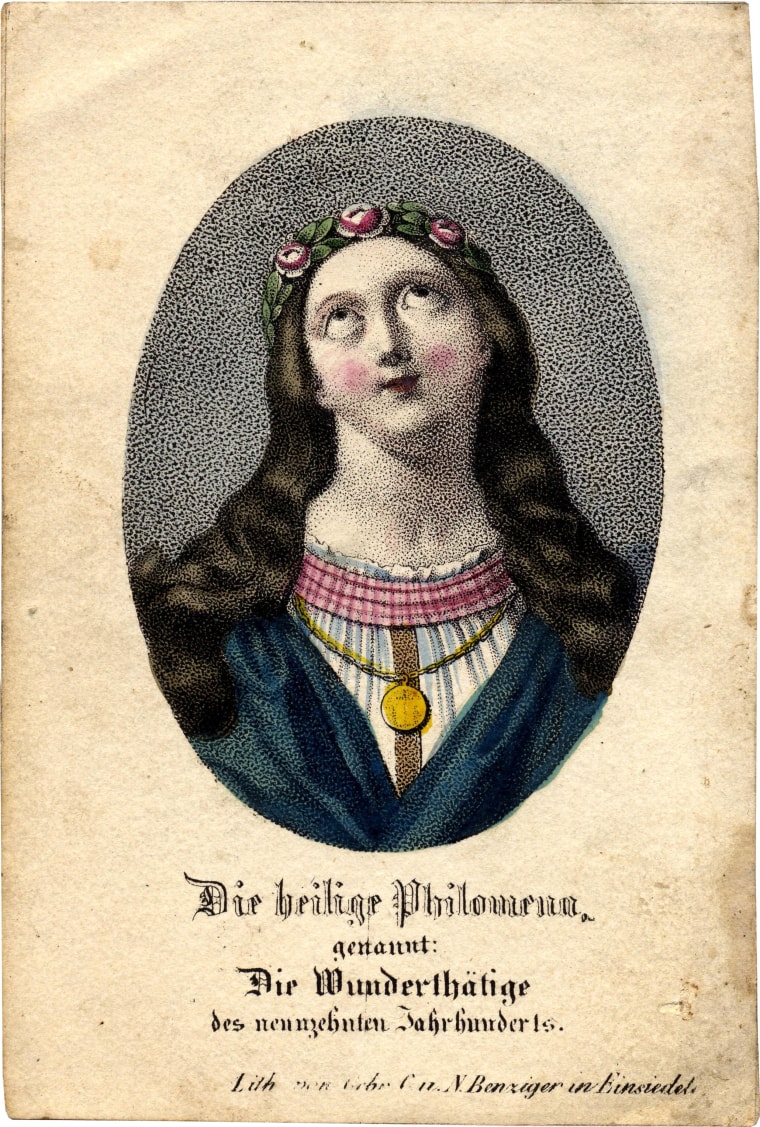Sunday's canonization of Popes John Paul II and John XXIII is bringing attention to the complex process of becoming a saint, a highly regulated series of steps that can seem quite mysterious to those who are not devout Roman Catholics.
Here's a rundown on how martrys and miracle-makers get into a club that is actually less exclusive than many might imagine:
How many saints are there?
It's hard to pin down an exact number, but more than you might think. In the old days — as in the first thousand years of the church's history — saints were created by popular demand. St. Ulrich of Augsburg was the first to be canonized by a pope, in 993, and the Vatican eventually took over and formalized the process.
The Vatican's Roman Martyrology says some 7,000 people have been canonized or beatified (an earlier step), but some scholars believe the total number of saints is more like 10,000.
Is it easier or harder to become a saint now?
The raw numbers would suggest it's easier, though they don't tell the entire story.
Pope Francis, who has been pontiff for just over a year, has already canonized 817 men and women, but 813 of them were martyrs from a single group of Italians who were beheaded by Ottoman Turks in the 15th Century.
John Paul II canonized 482 during the quarter-century he presided over the church, but more than 400 of those were from groups of martyrs, according to the Catholic World Report. By contrast, Pope Benedict XVI added 45 saints during his pontificate.
Does every pope become a saint?
With so many halos being handed out, you might think so. Yet only about a third of all popes are saints, and it's getting harder to make the leap the from St. Peter's throne to sainthood, according to the Pew Research Center.
Fifty-two of the first 55 popes got the nod but that pace has slowed dramatically. Only five popes have become saints in the last 1,000 years, although that will now shoot up to seven. Four more popes who died between 1878 and 1978 are in the pipeline — Pius IX, Pius XII, Paul VI, and John Paul I — but JPII leapfrogged ahead of them.
Can sainthood be revoked?
Canonization is permanent but some saints have been, for lack of a better term, demoted — by being dropped from the Vatican's list of official feast days, sometimes because of questions about whether they actually existed.
One notable example is Saint Philomena, who was recognized in 1835 after a tomb with a remains of a teenage girl was found in the Roman catacombs with the inscription "Filumena" and a symbol of martydom, according to the Times of London.
The Vatican suppressed her cult in 1960 after experts decided there was no evidence linking the bones in the tomb to the legend of a martyred Greek princess.
Saint Christopher, the patron of travelers, lost his standing in 1969 — although not his popular cachet if the number of medals hanging from rear-view mirrors in cars is any indication. St. George, the patron of warriors, was also bumped down that year but restored in 2001 without explanation.
Where can I find a list of all the saints?
The compendiums that exist are extensive, but not necessarily exhaustive. And you might want to brush up on your Latin.
The Vatican's Congregation for the Causes of Saints, the bureaucratic arm of the church that shepherds candidates through the complex steps, published the Index ac Status Causarum in 1998 with the names of the blesseds and saints — but only for the previous 400 years.
An oft-cited reference is Butler's Lives of the Saints, but that was written in the mid-18th century and only contains 2,500 biographies in its latest revision.
Then there is the Acta Santorum, an index based on feast days that has 68 volumes, the first of which was published in 1643. A cluster of scholarly Jesuit priests in Brussels, the Bollandists, is toiling to complete it in chronological order, using church records and old texts in myriad languages to verify that the saints deserve veneration.
In a rare interview given 30 years ago, the Bollandists' spokesman said the seven priests were hard at work on Nov. 11; the volume with Nov. 9 and 10 was finished in 1940. There's no way to know if these Sherlocks of sainthood will ever finish the job, which could take centuries.
